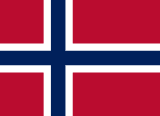Svalbard

About Svalbard
Svalbard (SVAHL-bar, Urban East Norwegian: [ˈsvɑ̂ːɫbɑr]), previously known as Spitsbergen, or Spitzbergen, is a Norwegian archipelago in the Arctic Ocean. North of mainland Europe, it is about midway between the northern coast of Norway and the North Pole. The islands of the group range from 74° to 81° north latitude, and from 10° to 35° east longitude. The largest island is Spitsbergen, followed by Nordaustlandet and Edgeøya. The largest settlement is Longyearbyen.The islands were first used as a base by the whalers who sailed far north in the 17th and 18th centuries, after which they were abandoned. Coal mining started at the beginning of the 20th century, and several permanent communities were established. The Svalbard Treaty of 1920 recognizes Norwegian sovereignty, and the 1925 Svalbard Act made Svalbard a full part of the Kingdom of Norway. They also established Svalbard as a free economic zone and a demilitarized zone. The Norwegian Store Norske and the Russian Arktikugol remain the only mining companies in place. Research and tourism have become important supplementary industries, with the University Centre in Svalbard (UNIS) and the Svalbard Global Seed Vault playing critical roles in the economy. Apart from Longyearbyen, other settlements include the Russian mining community of Barentsburg, the research station of Ny-Ålesund, and the mining outpost of Sveagruva. Other settlements are farther north, but are populated only by rotating groups of researchers. No roads connect the settlements; instead snowmobiles, aircraft and boats are used for inter-settlement transport. Svalbard Airport, Longyear serves as the main gateway.
Approximately 60% of the archipelago is covered with glaciers, and the islands feature many mountains and fjords. The archipelago has an Arctic climate, although with significantly higher temperatures than other areas at the same latitude. The flora is adapted to take advantage of the long period of midnight sun to compensate for the polar night. Svalbard is a breeding ground for many seabirds, and is home to polar bears, reindeer, the Arctic fox, and certain marine mammals. Seven national parks and twenty-three nature reserves cover two-thirds of the archipelago, protecting the largely untouched, yet fragile, natural environment.
While part of the Kingdom of Norway since 1925, Svalbard is not part of geographical Norway; administratively, the archipelago is not part of any Norwegian county, but forms an unincorporated area administered by a governor appointed by the Norwegian government, and a special jurisdiction subject to the Svalbard Treaty that is outside of the Schengen Area, the Nordic Passport Union, and the European Economic Area. Svalbard and Jan Mayen are collectively assigned the ISO 3166-1 alpha-2 country code "SJ". Both areas are administered by Norway, though they are separated by a distance of over 950 kilometres (590 miles; 510 nautical miles) and have very different administrative structures.
Longyearbyen
Longyearbyen (Urban East Norwegian: [ˈlɔ̀ŋjiːrbyːən];) or "The Longyear Town" is the world's northernmost settlement and largest inhabited area of Svalbard, Norway. It stretches along the foot of the left bank of the Longyear Valley and on the shore of Adventfjorden, the short estuary leading into Isfjorden on the west coast of Spitsbergen, the island's broadest inlet. As of 2002 Longyearbyen Community Council became an official Norwegian municipality. It is the seat of the Governor of Svalbard, whose current mayor is Arild Olsen.Known as Longyear City until 1926, the town was established by and named after American John Munro Longyear, whose Arctic Coal Company started coal-mining there in 1906. Store Norske Spitsbergen Kulkompani (SNSK) took over the mining operations in 1916, and still conducts mining. The German Kriegsmarine almost completely destroyed the town on 8 September 1943, but rebuilding took place after the Second World War. Historically, Longyearbyen was a company town, but most mining operations moved to Sveagruva during the 1990s, and production ceased in 2017 due to immense financial losses suffered by SNSK since 2014 due to market conditions. Meanwhile, the town has seen a large increase in tourism and research. This includes the arrival of institutions such as the University Centre in Svalbard, the Svalbard Global Seed Vault and Svalbard Satellite Station. Svalbard Airport and Svalbard Church serve the community.